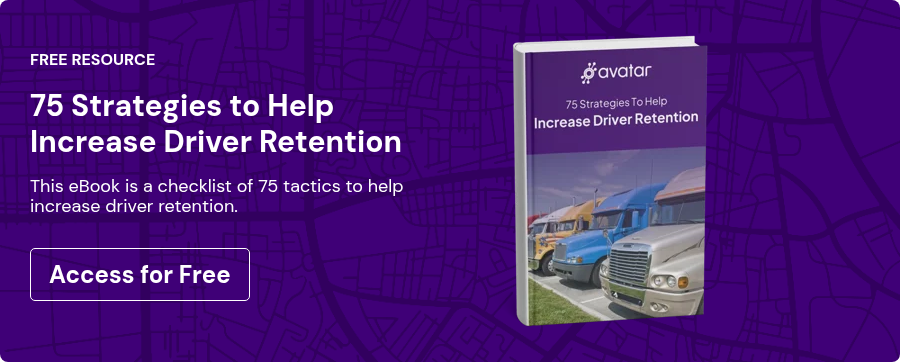Hire More Drivers with a Faster Onboarding Process
One of your biggest challenges in hiring quality drivers is that your competitors are vying for the exact same people. There are a lot of things going through a drivers’ minds when choosing their next employer - from how they’ll be treated, to the kinds of benefits a company offers.
A quality driver knows he can drive wherever he wants in this driver market. One question, however, is usually at the forefront: "When am I going to get my next paycheck?"
A quality driver knows he can drive wherever he wants in this driver market. One question, however, is usually at the forefront: "When am I going to get my next paycheck?"
If you’re hiring process is more than a few days, you’re taking money out of his pocket. If you want to hire more drivers, you need to have an efficient lead-to-hire process that allows you to hire them before the competitors can.
Our integrated partner, Randall-Reilly, recently released an article on Lead Velocity. Lead Velocity is essentially speed to hire. How long does it take you to take a recruit and give him the keys? A shorter Lead Velocity is crucial to hiring more drivers.
From a Lead to a Driver: How Long Does it Take?
The situation varies from lead to lead, but let’s say you have a driver who’s ready to work for you. It should take you no more than 3 days to bring him on-board.
By utilizing your driver Applicant Tracking System, these reports should be generated automatically to calculate your exact time to hire.
Read our three steps below so you can make this goal a reality.
Step 1: Focus on Your Ideal Candidates
Many companies struggle with lead velocity because they simply have too many unqualified leads. Stop wasting your recruiters’ valuable time with potential drivers you don’t even want.
- Narrow your focus and improve your lead velocity by qualifying candidates
- Develop a landing page that asks qualifying questions before they even talk to you
- Ask for information on years of experience, endorsements and driving record
Qualifying your leads allows you to spend your time with the right people.
Step 2: Automate New Hire / Contractor Paperwork
It takes most companies a few hours for their new drivers to fill out the necessary onboarding paperwork. In reality, new hire onboarding should take 15 minutes and can be done before showing up to orientation.
"In reality, new hire onboarding should take 15 minutes and can be done before showing up to orientation."
You only have a day or two of face-time with a new driver, so why are you wasting time filling out paper forms with repetitive information?
When you utilize a driver-centric Applicant Tracking System like A-Suite, new-hire paperwork becomes electronic. DOT applications, release forms, I-9, W2, and direct deposits can all be filled out in a fraction of the time. Not to mention, the forms are mobile friendly. This means you can make a conditional offer sooner while you complete the Previous Employer Verification.
Best of all, you’ll have more time in orientation to focus on welcoming the driver to the organization, spending time with their new dispatcher, learning about the company and customers, behind-the-wheel defensive driving training - anything better than two hours of paperwork!
Step 3: Speed-up Orientation With Online Training
Orientation creates unnecessary drag in the lead to hire process. It’s not because it’s unimportant. Just the opposite, orientation is a great time to make your drivers excited that they made the right choice to work for you. Orientation creates drag in the lead-to-hire process because most companies fail to properly utilize this time with their new drivers.
One way to properly leverage orientation is to move training to an online Learning Management System.
Require your leads learn the bare-minimum on their own so you can more effectively use your face-to-face time. Better yet, you can schedule on-going training like The A-Fleet through the learning management system after they’re hired. That way, you don’t need to squeeze everything in up front.
Stop Wasting Your Time and the Driver’s Time!
Hiring and onboarding faster than your competition will produce more drivers. Automating new driver paperwork and scheduling training before orientation will increase commitment levels from new hires.
You’ll be able to spend your precious orientation hours building and strengthening relationships with new drivers. These relationships are going to improve turnover in the first 90 days. Remember, there’s no silver bullet to solving the driver problem, but a good place to start is improving your lead-to-hire process.
Sign up for our newsletter
Get the latest articles on all things transportation delivered straight to your inbox.
Schedule a live demo

